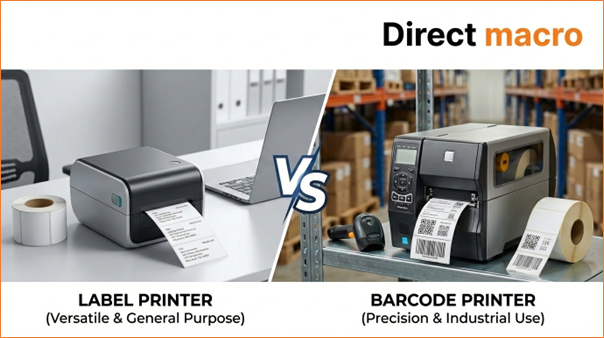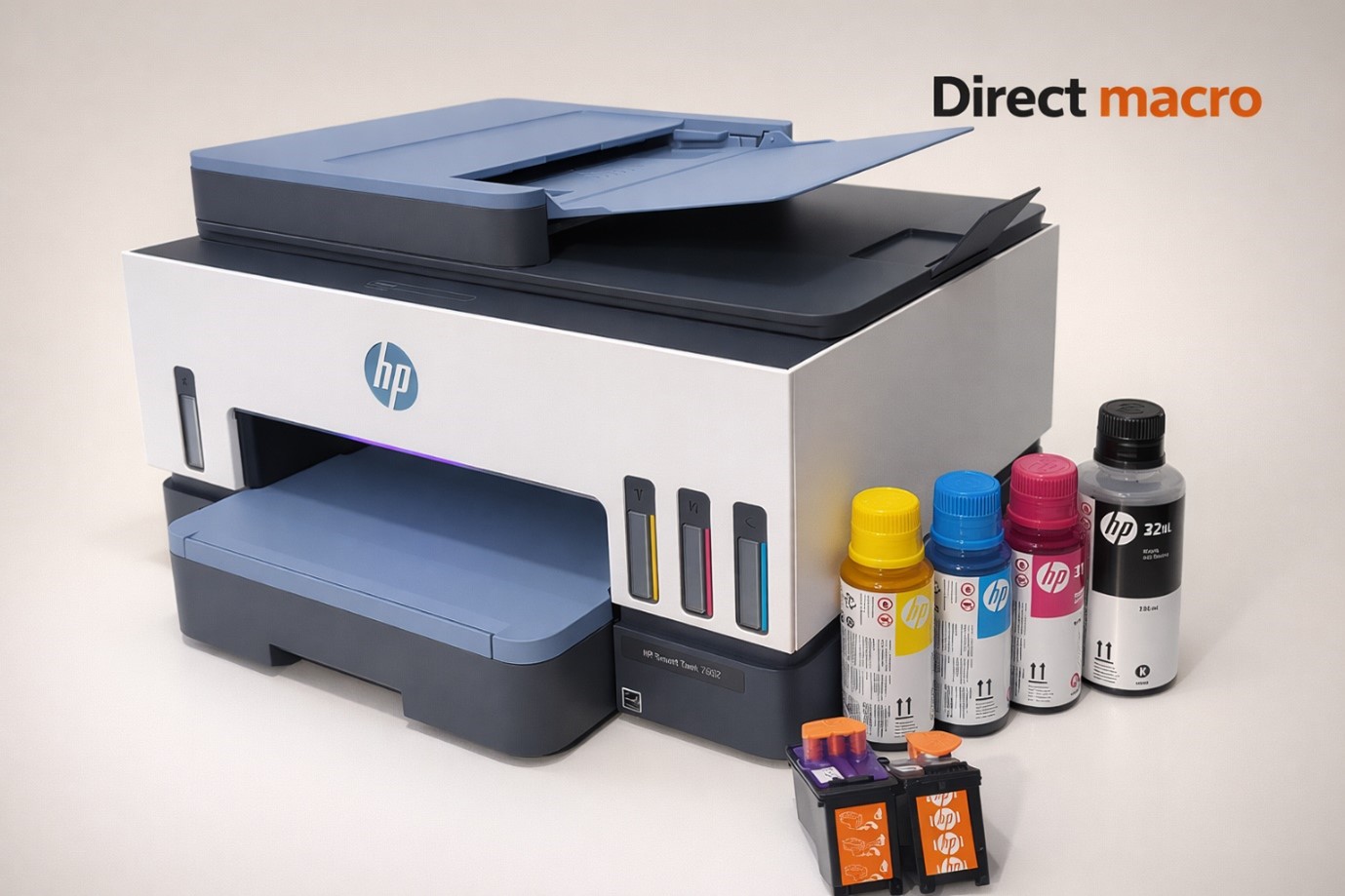Host Bus Adapter: Types, Comparisons, and Complete Guide to Modern Storage
In today’s complex world of data centers and enterprise storage solutions, data transfer speed, efficiency, and dependability are critical. The host bus adapter is a vital component of high-performance storage connectivity. It is a vital piece of hardware serves as a bridge which allowing communication between a host system such as a server and a storage device or network. Understanding the subtleties of the host bus adapter is critical for developing a reliable and scalable storage infrastructure.
The advancement of storage technologies, from direct-attached storage (DAS) to complicated SANs and Network Attached Storage (NAS), has considerably raised the necessity for specialized interconnectivity. An efficient HBA card is no longer a luxury; it is required for optimal I/O performance and minimal latency.
This guide looks into the world of HBAs, explaining their distinct varieties, responsibilities in various storage systems, and how they compare to other controllers.
What Is a Host Bus Adapter (HBA)?
A host bus adapter (HBA) is a circuit board or integrated circuit that links a host system often a computer or server to other network and storage devices. Its principal job is to manage I/O processing for the storage subsystem, thereby freeing this time-consuming activity off the host CPU. By doing so, the HBA dramatically increases data throughput while freeing up the server’s computing resources for other computational duties. Consider the HBA card to be the server’s specialist translator, speaking the native language of the storage device, whether Fibre Channel, SAS, or SATA and translating it into the language of the server’s internal bus (often PCI Express).
The HBA card serves a separate purpose from the general-purpose network interface card (NIC). While a NIC handles ordinary network traffic such as TCP/IP, an HBA is intended for high-speed and high-volume data transfers common in storage systems. It is a dedicated component that is entirely responsible for connecting the host to its storage resources and frequently using protocols designed for block-level data transfer.
Types of HBA Cards
The verity of storage protocols and interfaces has resulted in the development of various distinct types of HBA cards. Each customized to certain storage environments and performance needs.
1. Fibre Channel HBA
Fibre Channel HBAs are the foundation of high-end enterprise SANs. Fibre Channel is a high-speed networking technology usually 1, 2, 4, 8, 16, 32, and 64 gigabits per second that connects servers to shared storage devices. The Fibre Channel HBA is purpose-built to handle the Fibre Channel protocol. It provides greater performance, low latency, and advanced features like assured delivery and congestion control.
These HBAs are vital for mission-critical applications that require absolute data integrity and constant, high-speed access. They allow servers to communicate with storage arrays via a strong, dedicated fabric to ensure that I/O activities do not interfere with normal network traffic. One important feature of the Fibre Channel HBA is its capacity to handle large-scale deployments and long-distance connectivity.
2. PCIe HBA
The term PCIe HBA refers to the host bus adapter’s form factor and interface for connecting to the server motherboard. PCIe, or Peripheral Component Interconnect Express, is a high-speed serial computer expansion bus interface that connects hardware devices. Almost all modern HBAs and independent of protocol such as Fibre Channel, SAS, or others, are PCIe HBA cards because the PCIe bus provides the high-bandwidth and low-latency connection required for modern storage I/O.
The PCIe HBA uses the server’s PCIe slots, with the number of lanes (x1, x4, x8, x16) and PCIe generation (Gen3, Gen4, Gen5) defining the card’s maximum theoretical throughput. It guarantees that the communication line between the HBA and the server’s CPU and memory runs as quickly as possible. It prevents the internal bus from creating a bottleneck.
3. SAS HBA
SAS HBAs are designed for enterprise-grade drives. SAS provides improved performance (higher transfer rates), more reliability (thanks to features such as dual-porting), and the flexibility to connect a greater number of drives via expanders. SAS HBAs are the preferred choice for servers that require high uptime and I/O performance, and are commonly utilized in RAID topologies or big disk enclosures.
4. SATA HBA
In contrast, a SATA HBA (Serial Advanced Technology Attachment Host Bus Adapter) is a simpler and less expensive option for connecting consumer-grade SATA disks. While SATA drives are inexpensive and ideal for archival or less I/O-intensive applications.
A SATA HBA is most commonly encountered in environments where cost and storage capacity take precedence over peak performance and superior dependability characteristics.
SAS HBA vs SATA HBA
The comparison between SAS HBA vs SATA HBA is critical for understanding connections in direct-attached storage and smaller SANs. The protocols used to connect storage drives are Serial Attached SCSI (SAS) and Serial Advanced Technology Attachment (SATA).
A SAS HBA vs SATA HBA difference lies in the technology’s sophistication and performance.
Comparisons: Which one is better SAS HBA vs SATA HBA?
| Feature | SAS HBA | SATA HBA |
| Primary Use | Enterprise DAS/JBOD, High-end SAN | Cost-effective DAS, Archival Storage |
| Performance | High (Supports 12Gb/s, 24Gb/s and beyond) | Moderate (Typically 6Gb/s) |
| Reliability | High (Dual-porting, full-duplex) | Lower (Single-porting) |
| Complexity | More complex (Uses SAS expanders) | Simple (Direct connection) |
| Cost | Higher | Lower |
The comparison of SAS HBA vs SATA HBA shows a clear trade-off between enterprise-grade performance and consumer-level cost savings. Similarly, the comparison of HBAs vs RAID controllers reveals a functional difference such as connection versus data management.
Other Types of Network Adapters
In addition to host bus adapters, different network adapters can connect your host system to storage and/or network devices, such as:
1. Network Interface Cards
A network interface card (NIC) also known as a network adapter. It is a computer hardware component that links a device to a network. A NIC’s primary function is to enable communication and resource sharing among data communication equipment.
2. Internet SCSI (iSCSI) HBAs
An iSCSI HBA is a specialized network card that manages the iSCSI protocol, which allows servers to access storage via an IP network. It differs from typical network interface cards (NICs) in that it offloads computation from the server’s primary CPU.
3. Converged Network Adapters (CNAs)
A Converged Network Adapter (CNA) is a single adapter that performs the functions of both an HBA and a Network Interface Card. It enables to handle both network traffic (such as Ethernet) and storage traffic (such as Fibre Channel) via the same line to minimizing the number of adapters and cables required.
4. Host Channel Adapters
A Host Channel Adapter (HCA) is a network fabric connector that only supports the InfiniBand protocol. InfiniBand is a high-performance network built for extreme throughput and ultra-low latency, with a focus on high-performance computing (HPC) clusters.
Which One Is Best HBA vs RAID Controller?
The dispute between HBAs vs RAID controllers exposes two fundamentally different approaches to storage connectivity and management. The “best” option is entirely dependent on the desired functionality.
A host bus adapter (HBA) is a simple pass-through device. It functions solely as an I/O translator, connecting the host to the storage device and delegating all storage management decisions (such as parity computation and mirroring) to the operating system’s software. The primary role of an HBA is to provide connectivity and maximize I/O speed.
In comparison, a RAID controller is a sophisticated device that includes an onboard processor, firmware, and, in some cases, cache memory. Its main purpose is to manage and abstract many physical drives into logical units (RAID arrays) for the host operating system. A fundamental distinction between an HBA and a RAID controller is that the RAID controller handles the expensive processes of parity calculation and data striping/mirroring, offloading them off the host CPU.
Comparisons: HBA vs RAID Controller
| Feature | HBA | RAID Controller |
| Primary Use | Pure Connectivity/Passthrough | Data Aggregation & Protection |
| Performance | High I/O Throughput | Performance depends on RAID level |
| Reliability | High (Dedicated Hardware) | High (Hardware abstraction & redundancy) |
| Complexity | Simple (Protocol Translation only) | Highly complex (Onboard CPU, cache, firmware) |
| Cost | Lower to Moderate | Higher (Due to specialized hardware) |
An HBA is suited for connecting to a sophisticated external storage array (such as a SAN) that handles all RAID management. If you are using direct-attached storage and require the server to build and maintain RAID volumes, a RAID controller is the only option.
Key Benefits of Using an HBA Card
The use of an HBA card offers numerous critical advantages in a modern storage environment:
- I/O Offloading and Performance: The HBA handles the computationally expensive process of controlling the storage protocol and I/O stack. It considerably reduces the demand on the host server’s CPU and allowing it to devote more resources to executing applications. It results in improved overall system performance.
- Scalability and Connectivity: HBAs, particularly Fibre Channel HBA and SAS variations, enable a single server to communicate with dozens or even hundreds of physical drives or logical units via external enclosures, SAN switches, and fabric topologies. It significantly enhances the storage capacity and flexibility accessible to the host.
- Specialized Protocols: They enable the use of high-speed and enterprise-grade protocols such as Fibre Channel and SAS, which are critical for applications that require low latency and large bandwidth.
- Hardware Reliability: Compared to software-based alternatives, a dedicated PCIe HBA provides hardware-level reliability and driver stability, resulting in constant performance and less data loss.
- Simplified Storage Management: In SAN systems, an HBA connects the server to centralized storage, simplifying backup, disaster recovery, and data provisioning throughout the data center.
Direct Macro – Explore Our Top Selling Products
At Direct Macro, we provide a carefully chosen collection of high-quality host bus adapter solutions from top manufacturers. Our collection is tailored to satisfy the needs of any enterprise infrastructure, from old systems to the most advanced hyper-converged designs.
1. Dell 2Gb Fibre Channel Host Bus Adapter
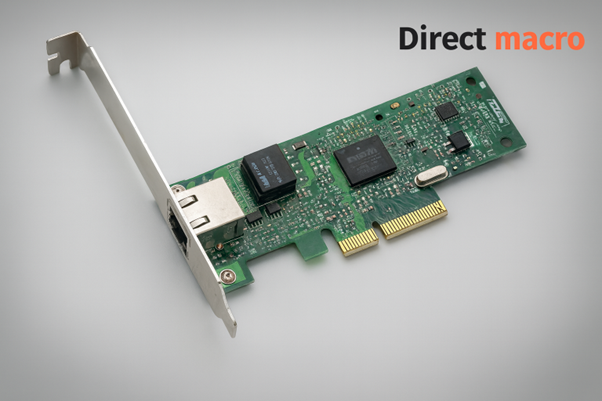
Dell 2Gb Fibre Channel Host Bus Adapter is an ideal solution for integrating older Dell servers into existing Fibre Channel SANs. This reliable Fibre Channel HBA offers dependable 2Gb connectivity to ensure backward compatibility and stable data transfer for essential applications.
Specifications
- 2Gb/s Fibre Channel
- Dell certified
- PCI-X interface
Reasons to Buy
- Trusted Dell hardware
- Reliable legacy systems support
- Ideal for Fibre Channel SANs
Reasons to Avoid
- Slower speed for modern applications
- PCI-X compatibility limitations
2. IBM Network Host Bus Adapter 2-Pack
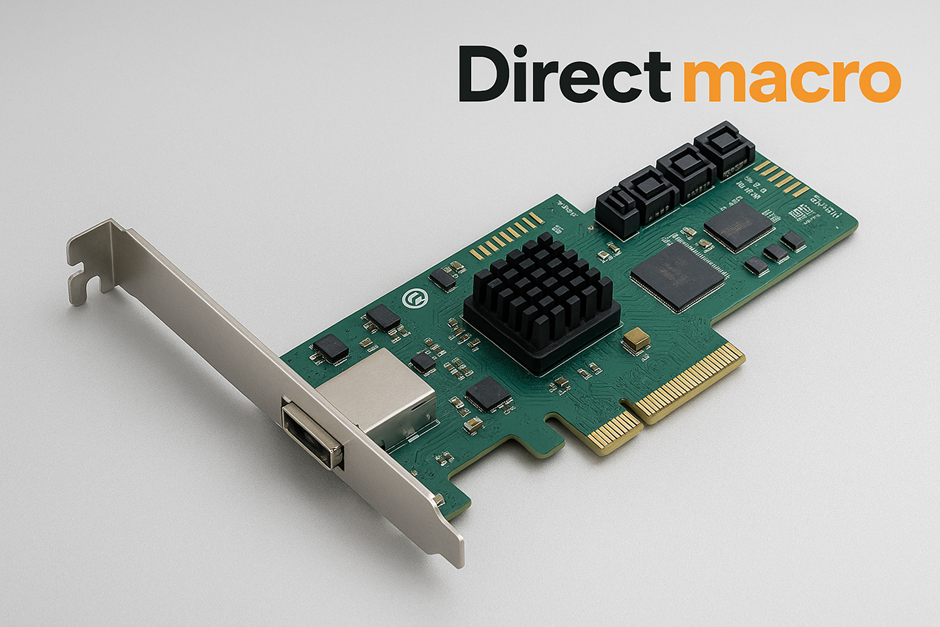
A versatile IBM network host bus adapter 2-pack offers dual-port connectivity and high reliability. A practical choice for enterprises looking to standardize their storage connectivity with a dependable HBA card solution.
Specifications
- Dual-pack HBA
- Compatible with IBM server architecture
- High throughput
Reasons to Buy
- Cost-effective bundle
- Optimized for IBM enterprise environments
Reasons to Avoid
- Brand-specific compatibility
- Not suitable for non-IBM systems
3. Lenovo 430-16I SAS/SATA 12GB Host Bus Adapter
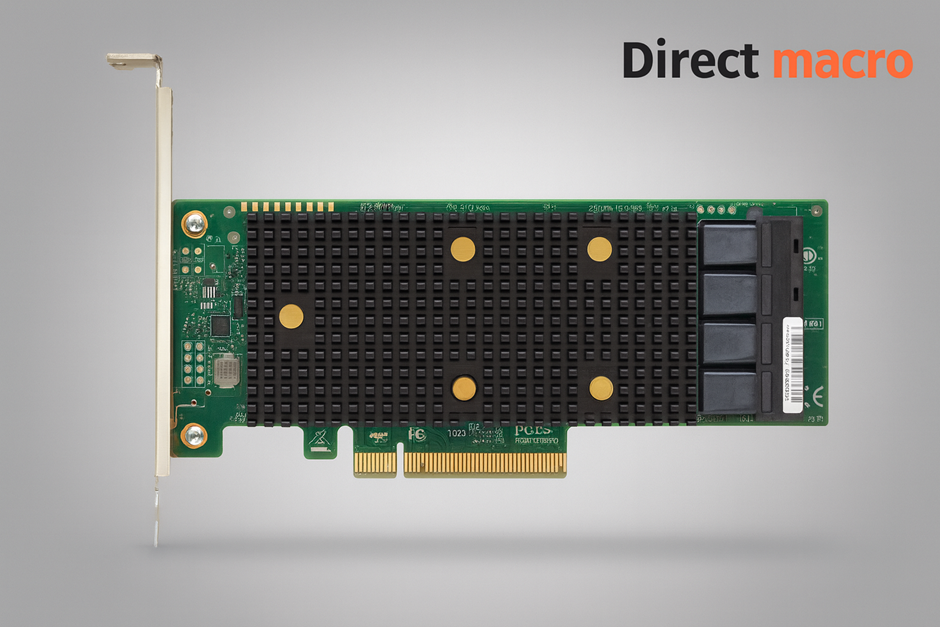
Lenovo 430-16I SAS/SATA 12GB Host Bus Adapter provides maximum throughput for modern drive arrays. The ultimate SAS HBA vs SATA HBA solution, supporting both drive types at lightning-fast speeds that making it perfect for high-density storage servers.
Specifications
- 12Gb/s data transfer
- 16 internal ports
- Compatible with both SAS and SATA
Reasons to Buy
- High port density
- Versatile connectivity (SAS and SATA)
- Excellent for dense server storage
Reasons to Avoid
- Might require external cooling
- Not intended for small setups
4. HP 4GB Host Bus Adapter
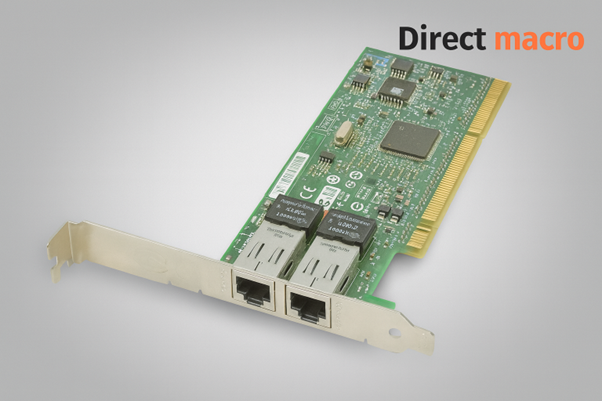
Hp 4gb host bus adapter is a strong and high-performance HBA from HP brand. It offering 4GB connectivity suitable for mid-range SAN and direct-connect storage environments. An excellent choice for a wide range of HP ProLiant servers requiring an upgrade in I/O capability.
Specifications
- 4Gb Fibre Channel
- PCI-X interface
- HP-certified
Reasons to Buy
- Solid HP legacy support
- Affordable for small business setups
Reasons to Avoid
- Limited to 4Gb/s
- Older PCI-X slot limits modern compatibility
5. QLogic 1GB PCI Fibre Channel Host Bus Adapter
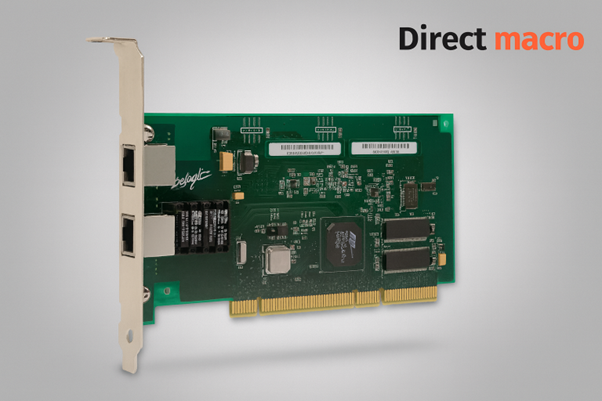
QLogic 1GB PCI Fibre Channel Host Bus Adapter is an economical and strong legacy adapter. This Fibre Channel HBA is perfect for systems that require reliable connectivity using the older, yet dependable and PCI bus standard.
Specifications
- QLogic chipset
- 1Gb/s Fibre Channel
- PCI interface
Reasons to Buy
- Reliable brand
- Great for legacy Fibre Channel applications
Reasons to Avoid
- Too slow for today’s workloads
- Outdated slot type (PCI)
How to Choose the Right Host Bus Adapter?
Selecting the correct host bus adapter is a critical decision that impacts performance, budget, and future scalability. Consider the following factors when you make you next purchase:
1. Protocol and Speed
- SAN Connectivity: Choose a Fibre Channel HBA if you are connecting to a Fibre Channel SAN. Ensure the speed such as 16Gb or 32Gb matches your switch and storage array capabilities.
- DAS Connectivity: Choose a SAS HBA for high-performance direct-attached storage or a SATA HBA for cost-effective and high-capacity SATA drives.
2. Bus Interface (PCIe HBA)
Verify the server’s available slot type and generation such as PCIe Gen4 x8 to ensure the PCIe HBA can fully utilize its rated bandwidth. An x8 card in an x4 slot will be bottlenecked.
3. Port Count
Determine if you need single-port (simplex) or dual-port (duplex) adapters. Dual-port HBAs are highly recommended for redundancy and failover in mission-critical environments.
4. Driver and OS Compatibility
Always check the manufacturer’s compatibility matrix to ensure the HBA card has certified drivers for your operating system and server model.
5. Target Functionality (HBA vs RAID Controller)
Reconfirm whether you need a simple passthrough device (HBA) or a device that will actively manage and aggregate disks like RAID Controller. The choice between HBA vs RAID controller dictates the final hardware selection.
Final Thoughts – Future of Host Bus Adapters in Modern Storage
The future of host bus adapters is intrinsically related to the rapid advancement of storage technologies. The most notable trend is the movement toward NVMe over Fabrics (NVMe-oF). NVMe-oF connects extremely fast NVMe SSDs via high-speed networks such as Fibre Channel or Ethernet (RoCE/iWARP). It is leading to the creation of new HBAs, known as PCIe HBAs or NVMe-oF adapters, that are specifically built to handle NVMe’s ultra-low latency and huge throughput.
The necessity for a dedicated HBA card will persist as long as storage systems require specialized, high-performance, low-latency connectivity, which general-purpose NICs cannot consistently offer. The primary function of host bus adapter offloading I/O and providing dependable, high-speed access to storage, is still critical for the next generation of data centers and cloud systems.
If you need more information about host bus adapters, please call us at (855) 483-7810 or fill out the contact us form for bulk orders.
FAQs
- What is the main difference between a Fibre Channel HBA and an iSCSI HBA?
A Fibre Channel HBA employs the Fibre Channel protocol via dedicated FC cables, particularly for SANs, to provide better guaranteed delivery and lower latency. An iSCSI HBA communicates using the iSCSI protocol over regular Ethernet (TCP/IP). FC is typically utilized in high-end, dedicated SAN systems, whereas iSCSI is more adaptable and works with current network infrastructure. - Can a SAS HBA be used as a RAID controller?
No, a normal SAS HBA is often a “dumb” passthrough card, which lacks an integrated processor or software capable of performing RAID calculations. However, many manufacturers produce “RAID Controllers” that are nominally based on an SAS architecture but include the requisite intelligence (CPU, cache) to fulfill the RAID function. A pure SAS HBA is not a RAID controller. - Do I need a PCIe HBA if my server already has onboard SATA ports?
Yes, if you need to connect enterprise-grade SAS drives, more drives than the onboard ports can handle, or require a specialized connection such as Fibre Channel. Onboard SATA ports function as an integrated, basic SATA HBA, but lack the performance, scalability, and protocol support of a dedicated PCIe HBA (such as Fibre Channel or high-speed SAS).
Do you need advice on buying or selling hardware? Fill out the form and we will return.

Sales & Support
(855) 483-7810
We respond within 48 hours on all weekdays
Opening hours
Monday to thursday: 08.30-16.30
Friday: 08.30-15.30





